Who Makes a Better Movement - Rolex or Omega?
By: John B. Holbrook, II
March 1st, 2009
For years, rabid enthusiasts in both the Rolex and Omega camps have hotly debated which of the two companies makes a better movement. In fact, it was one such debate topic posted in the Omega Forum of WATCH TALK FORUMS which prompted me to write this article. It would be arrogant of me to assume that I can definitively settle this debate - so let me make it perfectly clear that I'm just sharing my own personal opinion on this topic. I feel it's an educated opinion, but an opinion nonetheless.
I think the
best place to start in comparing the movements which these two companies
produce, is to look at Rolex Caliber 3135 (produced since 1988) and the Omega
Caliber 1120 produced since 1994. These are the two "work horse" three-hand
movements found in majority of watches both companies produce.
Here's some photos of each, begining with the Rolex 3135:
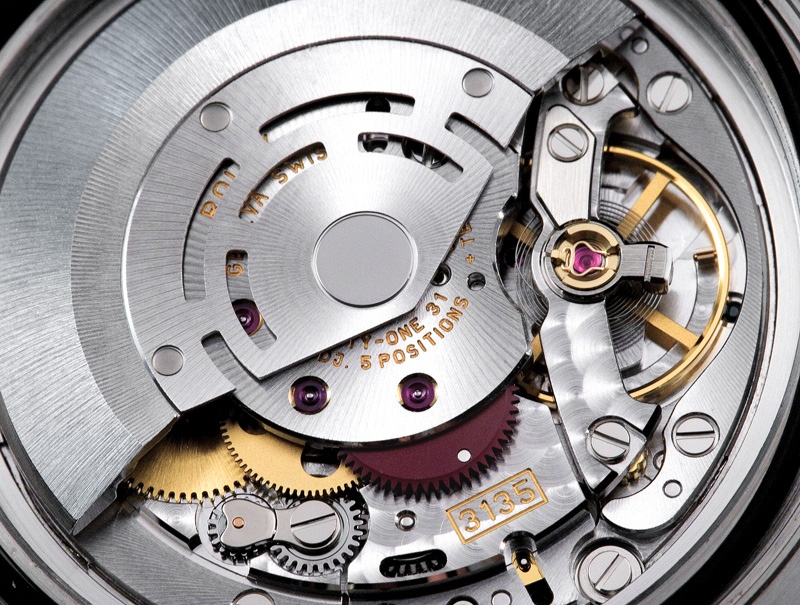
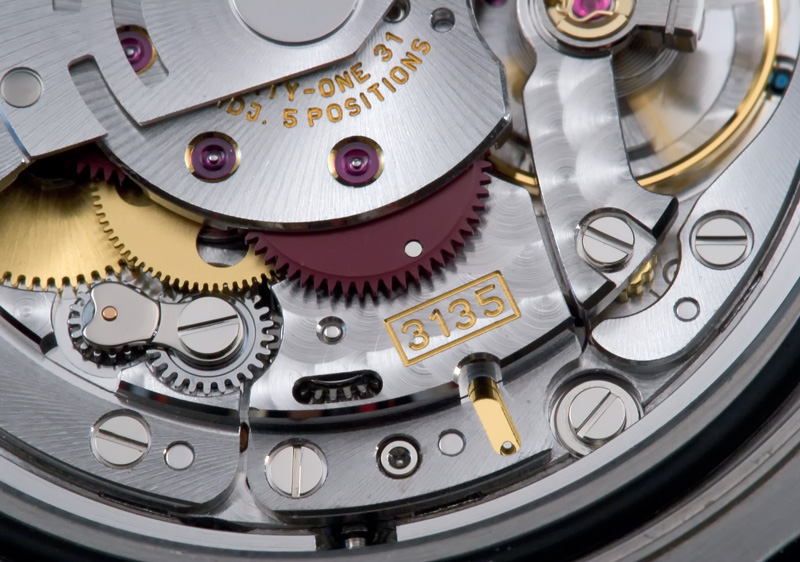
And here are some photos of the Omega 1120:
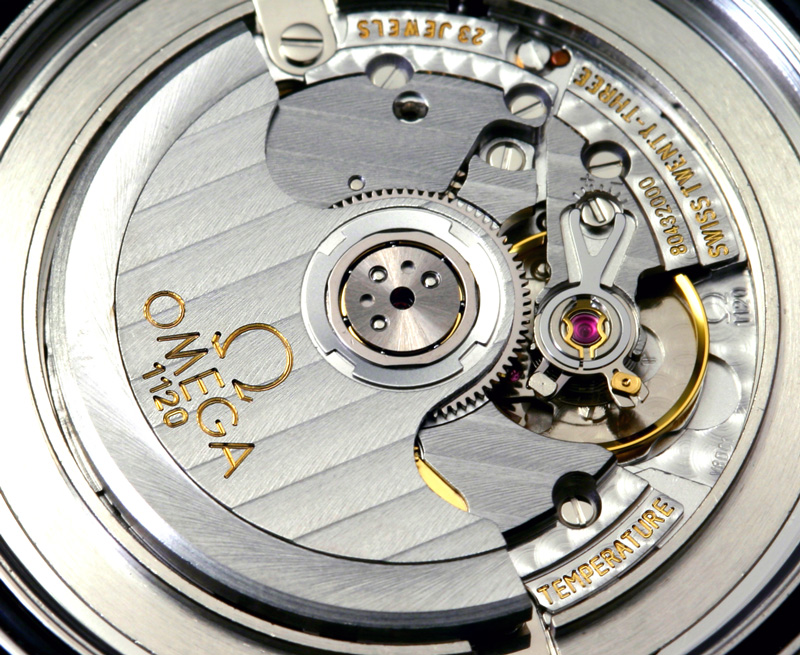
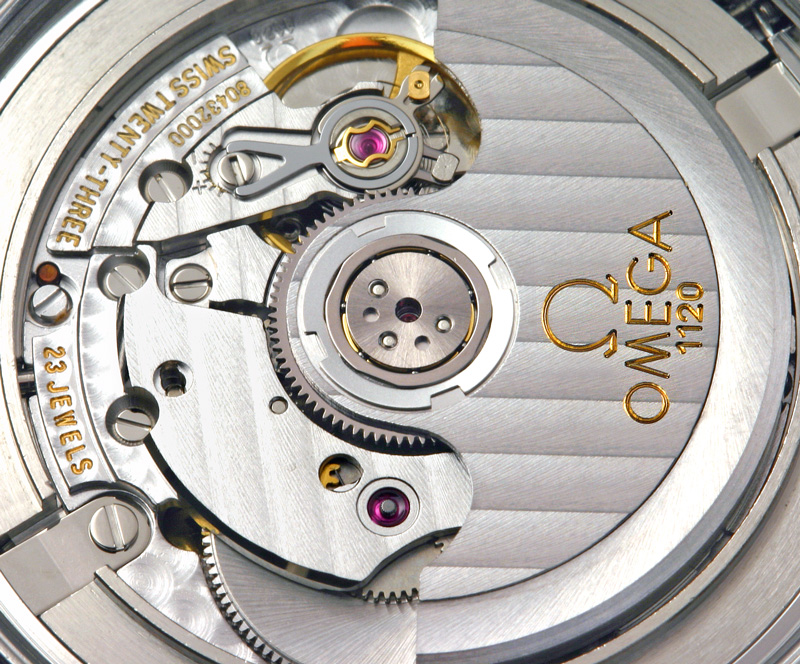
I really, really do love both the Omega caliber 1120, and the Rolex 3135. If you compare the 1120 to the pre-Parachrom Bleu hairspring version of the 3135 (the new Rolex hairspring has only begun showing up on some Rolex watches in the past year), the two calibers are nearly identical in most measurements of performance. There are only a few areas where the 3135 has any appreciable advantage over the 1120.
The glucydur balance wheel of the 3135 uses the Microstella system for making minor adjustments in timing. The system is comprised of 4 screws at equilateral distance points along the balance wheel. If they are moved towards the center of the balance wheel, the rate will speed up. Moving them away from the center will slow the rate down. The 1120, which is of course a modified ETA 2892, uses the Etachron adjustment screw, which is a less elegant design (but cheaper to manufacture) offers less control and precision over accuracy adjustment than a traditional design of having adjustment screws on the balance wheel, which is the preferred method of controlling accuracy among high end watch brands and not just Rolex.


Rolex has smartly designed the caliber 3135 with a freely sprung balance (as compared to the regulated balance in the 1120), as well as a Bruget overcoil. Again, most high end watch manufacturers use a freely sprung balance, and Omega themselves went to a freely sprung balance design in the next generation of the caliber 1120, which was the 2500. While Rolex manufactures nearly every part inside the caliber 3135, the hairspring is made by Nivarox, which Omega also uses. But the most current Rolex 3135 calibers appear to be using the in-house designed and manufactured Parachrom Bleu hairspring. Rolex also incorporates KIF shock protection to further protect against timing error due to sudden movement - it should be noted that the KIF system is quite similar to the ETA Incabloc shock protection system found in the 1120, though most watchmakers I've spoken to on the topic give a slight advantage to the KIF design.
Having said all of that, I firmly believe that while from a theoretical design perspective, the Rolex 3135 does beat out the Omega 1120, most 1120 equipped watches will perform indistinguishably from a 3135 equipped watch in practical, day to day use. The 1120 is a great, great movement and I've owned several 1120 equipped Omega watches. All kept to COSC standards of accuracy, and required periodic adjustment to stay that way. The same can be said of the many Rolex 3135 watches I've owned.
With regard to the Daniel's Co-Axial Escapement equipped calibers, I'll go on record by saying that I think Omega went in the wrong direction here. From a marketing perspective, it was a brilliant move by Omega - they needed something which could differentiate themselves from their chief competitor - Rolex. Something they have, and the other guys don't. But the problem is, true innovation in centuries old mechanical watch technology is hard to come by. Then along comes Daniels peddling his escapement (which Rolex, among several other watch manufacturers did not buy). Now they can market their watches as having this gee-wiz new technology (which the average consumer, just doesn't understand) which promises a longer-lasting, less maintenance required watch, that's more accurate to boot. And to help the average Joe watch buyer understand, Omega raises their warranty coverage on Co-Axial watches from two to three years. All sounds good, right? Well, not exactly.

Omega and their Daniels Co-Axial escapement promise that almost no lubrication is needed compared to a traditional escapement design. If Omega's watches ran at the same balance wheel beat speed (as seen in the Omega 1120, Rolex 3135, and dozens of other calibers) of 28,800 BPH, I'd believe it. But every watch movement that I've seen Omega equip with the Co-Axial escapement runs at a significantly lower beat speed than 28,800. The Omega caliber 2500 (the first Omega Co-Axial equipped caliber) has a beat speed of 25,200. Same with the all in-house Omega 8500. So why is this a big deal? There are two problems with lowering the beat speed to 25,200 from 28,800.
The first problem with the lower beat speed is that it's inherently less accurate. I could launch in a great explanation as to why, but Walt Arnstein has already written a great article explaining why faster beat speeds mean more accuracy, which you can click on the underlined portion and read. The article is a tad dry, so for the uninitiated, let me summarize by quoting his conclusion: "But given everything equal, the properly designed fast-beat watch does have a leg up on its slower cousin." Now, one can debate the actual impact of losing 3,600 beats per hour has on accuracy. To me, that's not even the point - the point is, we're going the wrong direction. I want a more accurate movement, not a less accurate movement. Many will argue that my above issues with the accuracy lost due to the reduced beat speed is irrelevant because all Omega Co-Axial escapement equipped watches meet COSC accuracy standards for accuracy, and are COSC certified Chronometers. To this, I would reply that the only thing irrelevant is the COSC Chronometer standard itself. Without going too far off on a tangent, suffice to say that Rolex, Omega, and the entire luxury mechanical watch making industry have for too long allowed the COSC accuracy standard of -4 to +6 seconds per day be their defining benchmark for success. I can remember not so long ago that any car that could do 0-60 in under 8 seconds was pretty impressive, and considered "high performance." Is that still true today? No. Today, many decidedly non-high performance family sedans and sport utility vehicles can easily reach 0-60 in 8 seconds. To be considered a "high performance" vehicle, the benchmark is much lower - perhaps the six second range. Maybe 5. The point is, the standard of -4 to +6 seconds a day is a low hurdle for watch companies to have to clear to in order to get Chronometer certification. The Seiko watch company doesn't submit their watches for COSC testing and certification, but they guarantee their Grand Seiko line of watches to perform at accuracy standards which exceed COSC (-2 to +5 seconds per day). In short, don't let COSC certification of a Co-Axial equipped Omega unduly influence your opinion of its "accuracy."
The second problem with a lower beat speed is more of a cosmetic one - the lower the beat speed, the less smooth the second hand "sweep" is. In a slower-beating movement, there are less beats per second, which translates to less "ticks" per second of the second hand - more staggered and less smooth. How much less? If a movement beats 28,800 times per hour, it beats 480 times per minute, and 8 times per second. Comparatively, if a movement beats at 25,200 beats per hour, it beats only 420 times per minute, and only 7 times per second. Perhaps it's the anal retentive watch enthusiast in me, but I can definitely see more stagger in the second hand of a Co-Axial Omega, than I can in one not so equipped. Again, sensitivity to this point might vary but again, we're going in the wrong direction here. If I didn't want a smooth second hand, I'd have a quartz watch. I want a second hand that is more smooth, not less.
Of course both of the above points beg the question, if the Daniels escapement performed as advertised, why is there any need at all to lower the beat speed of the watch? Watches with a traditional escapement design, traditional lubrication, and a 28,800 beat speed have been performing admirably for decades. If you have to lower the beat speed of the watch movement to accommodate the Co-Axial escapement, thereby lowering wear and tear on the movement, in my mind the Daniels Co-Axial escapement fails in the most fundamental function it was designed for, and should be abandoned. Either the Co-Axial escapement simply does not fully and entirely remove the need for traditional lubricants to be able to run at 28,800, or Omega is simply too afraid of the potential and unknown long term effects on the life of a movement to let a Co-Axial equipped movement run at 28,800. Either way, the Co-Axial escapement simply does not offer a true engineering advantage over using a traditional escapement and traditional lubricants. But again, this goes back to a point I made earlier in the article - Omega didn't buy the Daniels Co-Axial escapement because it offered an engineering advantage. Omega bought the Daniels Co-Axial escapement because it offered because it offered a marketing advantage. A way for them to claim to have a competitive advantage - something the other guys don't have. If the Co-Axial escapement truly offered an engineering advantage over traditional escapements, then so many watch manufacturers before Omega would not have passed on it. In short, I think Omega should have passed on it too.
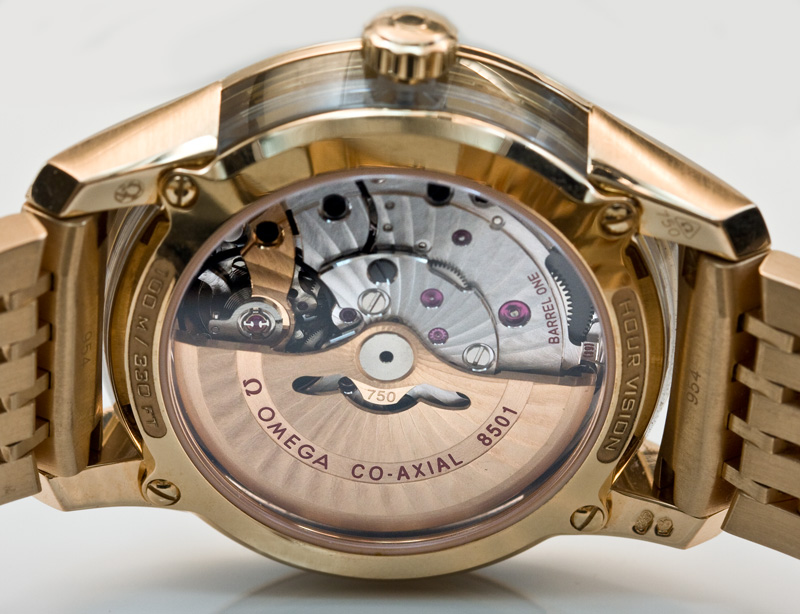
Omega has come a long way in a short time from a movement manufacturing perspective - much of which you just don't hear enough about. For instance, in the winding system of the new caliber 8500, the system winds the mainspring in both directions of rotation by means of a newly designed reverser. The rotor’s axle turns in a sliding bearing equipped with zirconium-oxide jewels. This ensures that the wearer neither hears the rotor nor feels any vibrations. Clearly this is another area where Omega was clearly targeting Rolex and their movements by trying to eliminate any competitive advantage a Rolex caliber has - the Oyster Perpetual self-winding system is completely silent and is almost impossible to feel, and has been for decades. Omega has also equipped the 8500 with two winding barrels, giving it a much longer power reserve than most other mechanical watches - 60 hours compared to about 50 hours in most Rolex calibers. And to offset the introduction of the Rolex Parachrom Bleu hairspring, Omega has countered with the "Si 14" silicon balance spring. Among the advantages possessed by a silicon balance spring include immunity from magnetism, excellent resistance to shocks, and isochronal consistency - the exact same benefits Rolex advertises with their Parachrom Bleu hairspring. But as long as Omega continues to aggressively implement the Co-Axial escapement in their movements (and after this much time and investment, I don't see Omega saying "Oops! We made a mistake here!" anytime soon) I think their movements will take a back seat to their competitors. Particularly the one competitor Omega seems to covet the most - Rolex. In the meantime, snap up all the Omega 1120 caliber equipped Omega watches you can - it's the best movement Omega has ever produced in my honest opinion.

